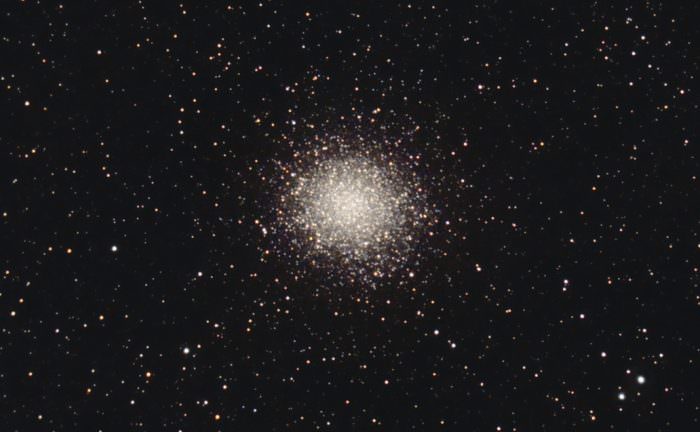
Welcome back to Messier Monday! Today, in our ongoing tribute to Tammy Plotner, we take a look at the M14 globular cluster!
In the 18th century, French astronomer Charles Messier began cataloging all the “nebulous objects” he had come to find while searching the night sky. Having originally mistook these for comets, he compiled a list these objects in the hopes of preventing future astronomers from making the same mistake. In time, the list would include 100 objects, and would come to be known as the Messier Catalog to posterity.
One of these objects was the globular cluster which he would designate as M14. Located in the southern constellation Ophiuchus, this slightly elliptically-shaped stellar swarm contains several hundred thousand stars, a surprising number of which are variables. Despite these stars not being densely concentrated in the central region, this object is not hard to spot for amateur astronomers that are dedicated to their craft!
Description:
Located some 30,000 light years from Earth and measuring 100 light years in diameter, this globular cluster can be found in the southern Ophiuchus constellation, along with several other Messier Objects. Although it began its life some 13.5 billion years ago, it is far from being done changing. It is still shaking intracluster dust from its shoes.
What this means is that M14, like many globular clusters, contains a good deal of matter that it picked up during its many times orbiting the center of our Galaxy. According to studies done by N. Matsunaga (et al):
"Our goal is to search for emission from the cold dust within clusters. We detect diffuse emissions toward NGC 6402 and 2808, but the IRAS 100-micron maps show the presence of strong background radiation. They are likely emitted from the galactic cirrus, while we cannot rule out the possible association of a bump of emission with the cluster in the case of NGC 6402. Such short lifetime indicates some mechanism(s) are at work to remove the intracluster dust... (and) its impact on the chemical evolution of globular clusters."
Another thing that makes Messier 14 unusual is the presence of CH stars, such as the one that was discovered in 1997. CH stars are a very specific type of Population II carbon stars that can be identified by CH absorption bands in the spectra. Middle aged and metal poor, these underluminous suns are known to be binaries. Patrick Cote, the chief author of the research team that discovered the star, wrote in their research report to the American Astronomical Society:
"We report the discovery of a probable CH star in the core of the Galactic globular cluster M14 (=NGC 6402 = C1735-032), identified from an integrated-light spectrum of the cluster obtained with the MOS spectrograph on the Canada-France-Hawaii telescope. Both the star's location near the tip of the red giant branch in the cluster color-magnitude diagram and its radial velocity therefore argue for membership in M14. Since the intermediate-resolution MOS spectrum shows not only enhanced CH absorption but also strong Swan bands of C2, M14 joins Centaurus as the only globular clusters known to contain "classical" CH stars. Although evidence for its duplicity must await additional radial velocity measurements, the CH star in M14 is probably, like all field CH stars, a spectroscopic binary with a degenerate (white dwarf) secondary."
[caption id="attachment_31595" align="aligncenter" width="580"] Messier 14 (M14) – the NGC 6402 Globular Cluster appeared first on Universe Today.
Messier 14 (M14) – the NGC 6402 Globular Cluster appeared first on Universe Today.





















